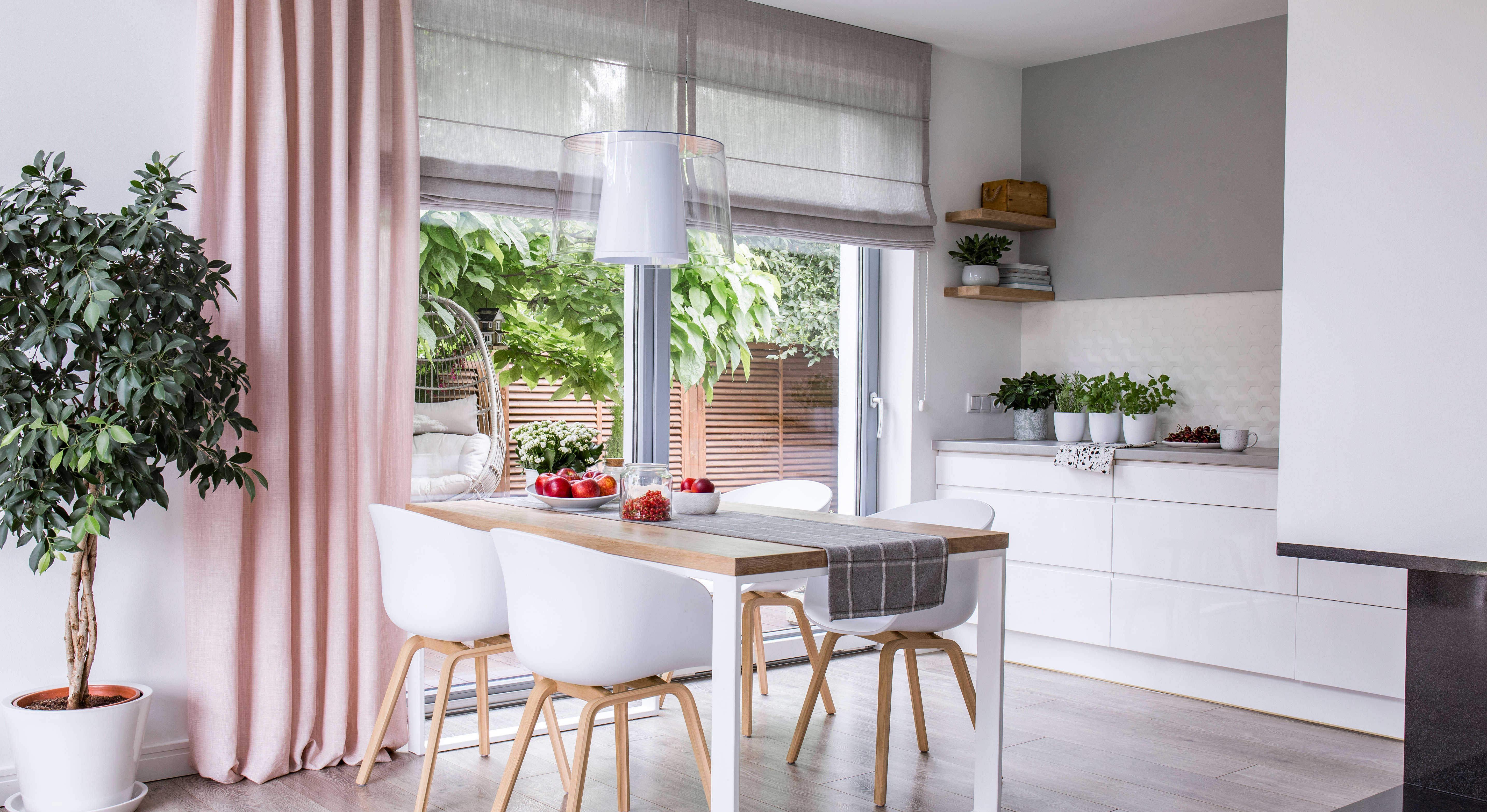
We all enjoy the benefits of sunlight, but it can be a challenge to get our daily quota of vitamin sunshine during the shorter winter days. And although it’s good to get outside as much as we can, that's easier said than done during a frigid January. So, how can we brighten up our homes in winter and optimise our exposure to natural light?
Here's our 9 top tips to bring light into your home in the winter. Although the sun might not be shining so bright, there are still plenty of ways to bring a glow to your interior.
1. Clean your windows

When it’s cold outside, bracing the bitter chill and cleaning your windows is not a top priority. But the grime builds up over the winter, and your glazing can become less than transparent. Cleaning your windows can bring more natural light into your home and add a real sparkle. It’s a quick and cheap hack (if you do it yourself) that will give instant results.
Don’t forget to clean inside and out. You’ll be surprised at how much dirt builds up inside, too, especially if your windows are prone to condensation and the knock-on effect of mold and mildew. You don’t need much kit, but a window squeegee will help to get a streak-free finish. This 2-in-1 Window Cleaner Shower Squeegee ($16, Amazon) has a short and long handle and a rotating head, making it easy to clean hard-to-reach places.
How to make a natural window cleaning solution
For a simple cleaning mix, add one part white vinegar to two parts water and mix in a spray bottle. It can then be sprayed straight onto the windows and wiped over using a lint-free cloth. You’ll be left with a streak-free shine.
2. Check your window treatments
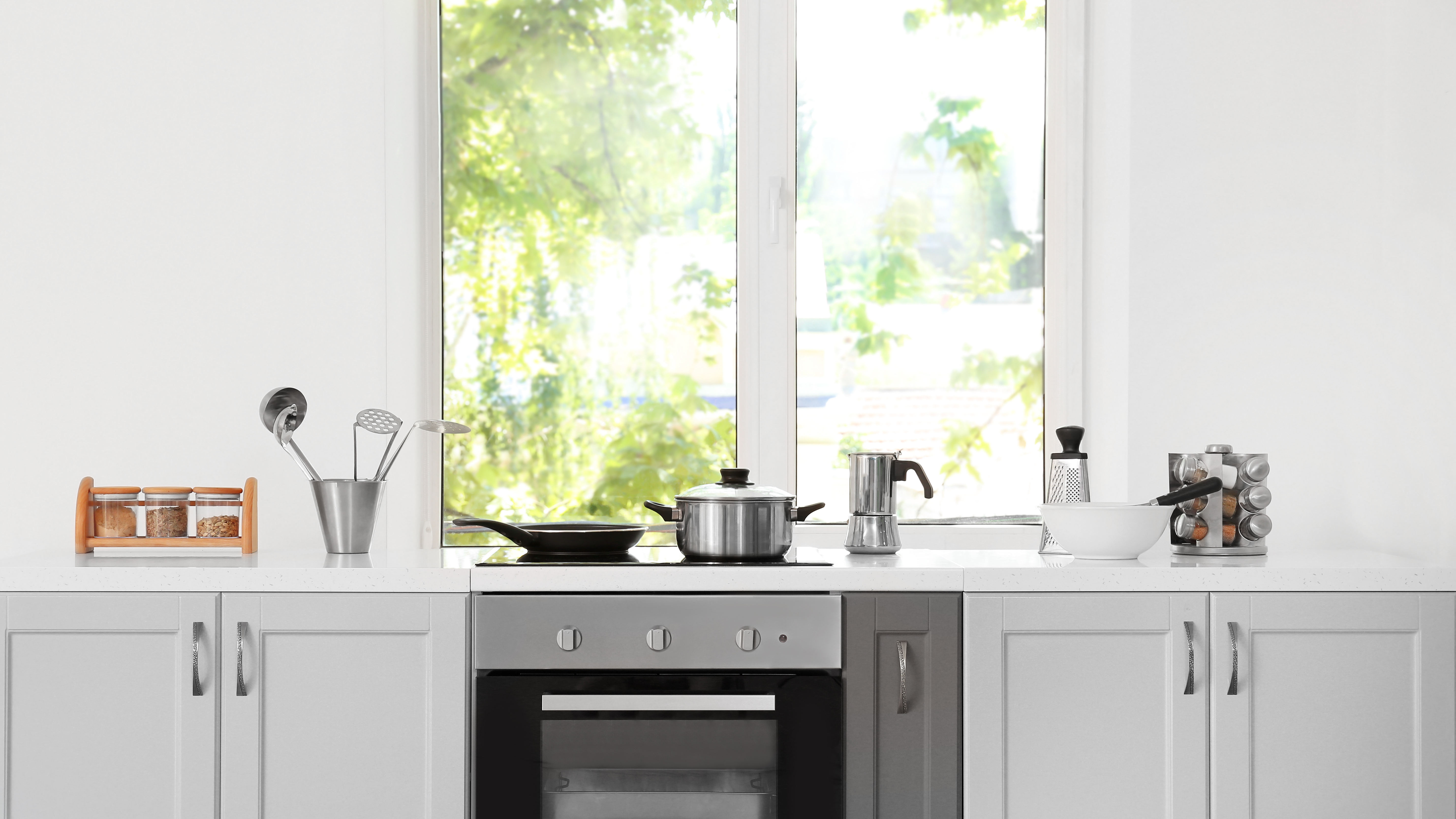
Heavy curtains and blinds can restrict light coming in, so rethink your window treatments. Do those blinds need to be pulled down as far, and can you swap those heavily lined curtains for something more transparent?
We’re not suggesting you replace a curtain that helps retain the heat, but it may be a case that they can be pulled back further during the day to let in more light. One way of doing this is to extend the curtain poles beyond the window so the whole window area can be exposed when the curtains are drawn back.
Another tip is to check what’s outside. Are any trees or shrubs obscuring the view and preventing light from entering? It might be time to get out your pruning shears.
3. Think colours
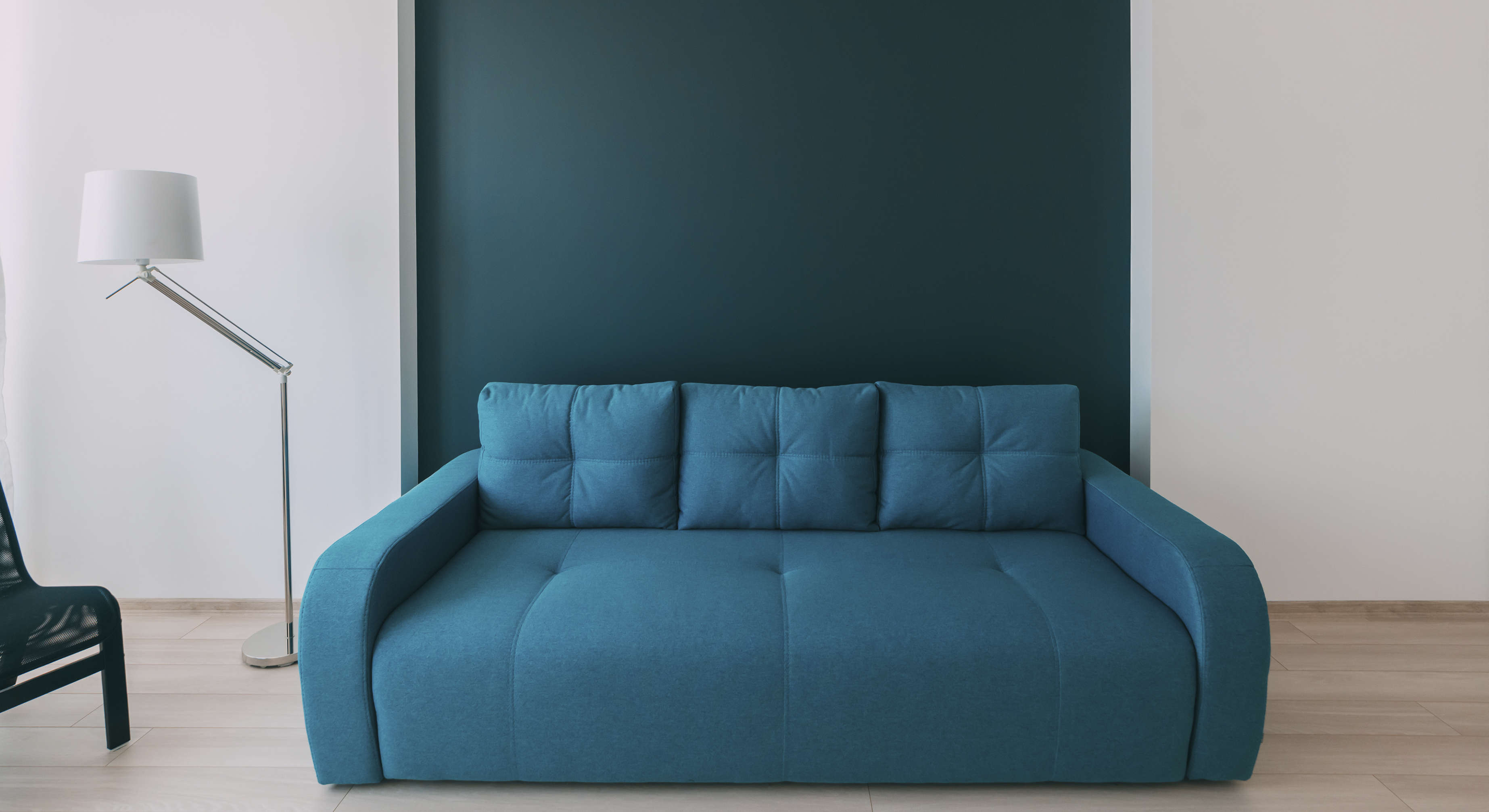
We’re not all happy to live in stark white houses, with whiter than white walls, but could a change of colour make a difference to your interior? You don’t need to go the whole hog. Think about painting your ceiling in a bright white, light-reflective paint or swap dark walls for something lighter. You can still add depth of colour by keeping one wall dark, making it a feature wall with paint or wallpaper. I did this when I revamped my guest room and it made a huge difference. I left three walls white and added wallpaper in a softer, heather tone for warmth.
4. Remember the floors
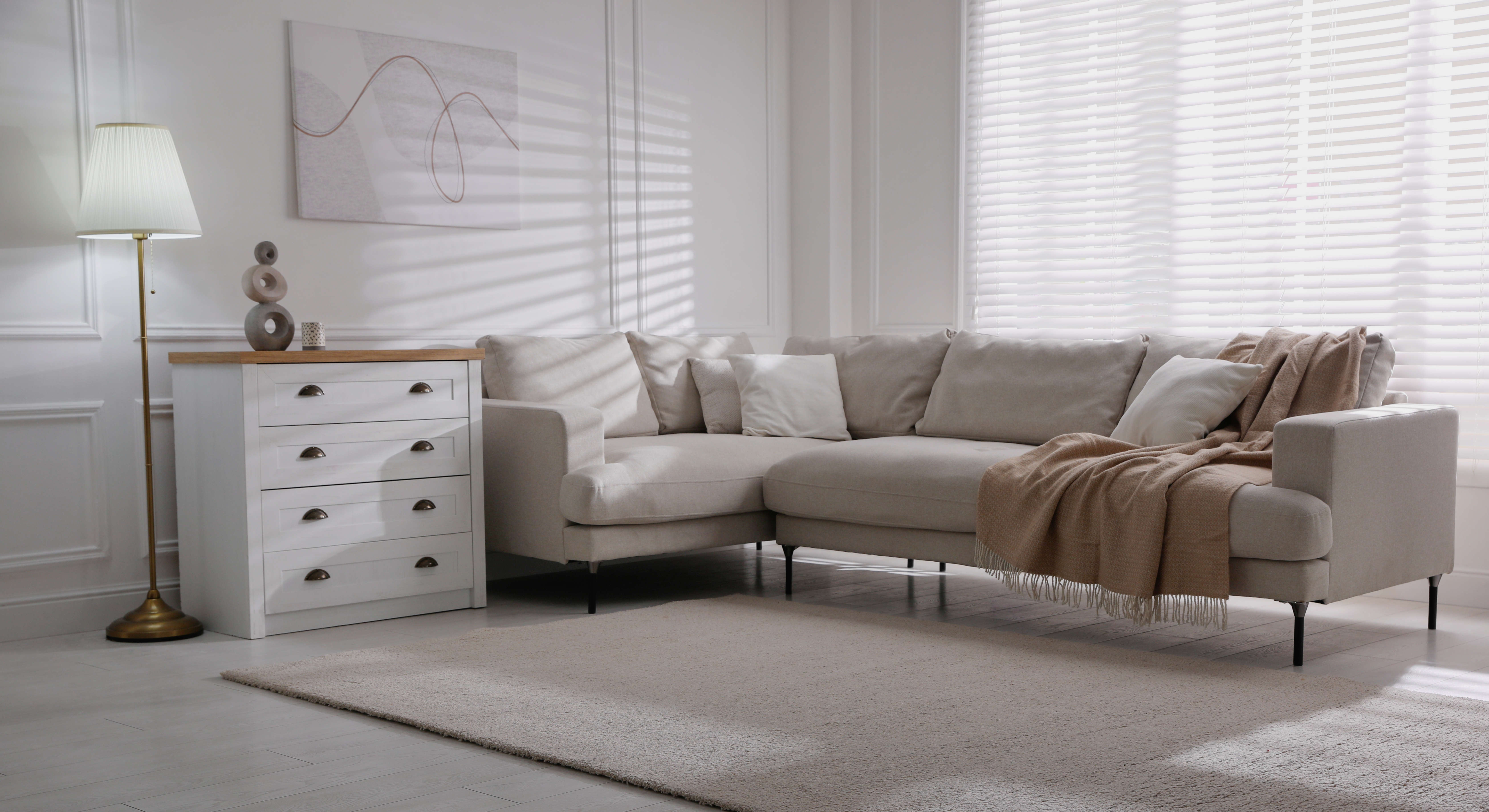
A simple change is to brighten up a dark floor. I have the original floorboards in my house, and although I don’t want to cover them completely, as they are a beautiful feature, they tend to absorb the light rather than reflect it. To compensate, I’ve added a neutral rug to my sitting area that reflects the light into the space. As a bonus, it also helps the room to look bigger.
If you already have a light-coloured rug on your floor, you’ll be surprised how cleaning your rug can make it look brand new, as over time, ground in dirt can reduce its light-reflecting qualities.
5. Mirror, mirror
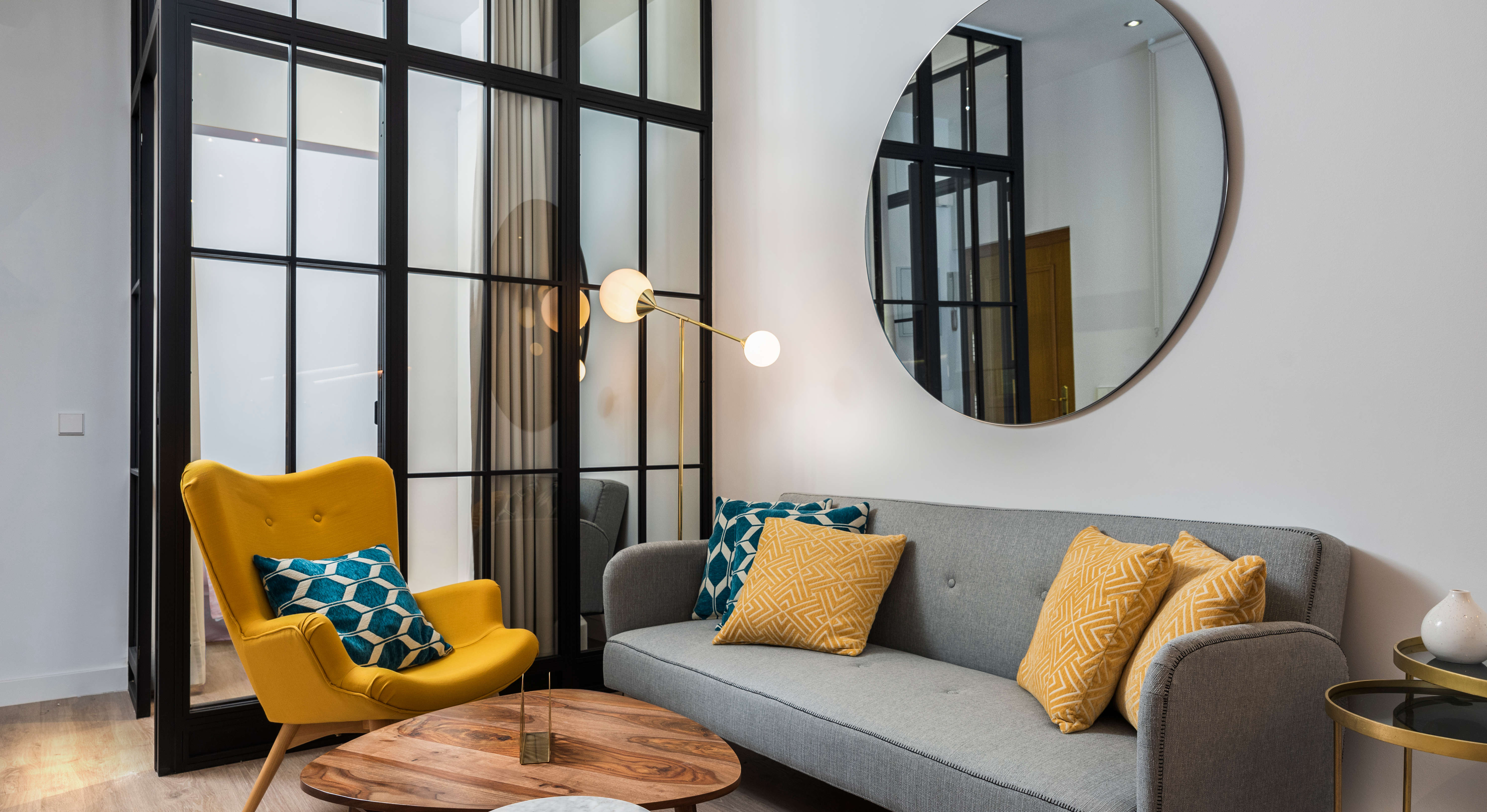
Apart from reflecting light, mirrors also help to make a room look bigger, so it’s a win-win. And if your wall space is limited, simply swap a picture for a bit of sparkle. You can always change it back again when the daylight hours become longer.
The best position to place a mirror is opposite a window, this way light will be cast directly at the mirror's reflective surface and will bounce back into the room.
I’m a particular fan of mirrors, although I don't like looking into them! In my main bedroom, the walls are papered with a patterned design, so finding pictures that didn’t clash was an issue. Instead, I opted for several mirrors with different frames to give a point of interest without causing visual overwhelm.
6. Mimic natural light with daylight bulbs

Changing your light bulbs is a quick and cheap fix. It may seem obvious, but we often look for more complicated solutions, whereas swapping a light bulb takes a few seconds and can make a dramatic difference to a room.
Light bulbs are based on a scale of cool to warm tints and are measured on the Kelvin scale, ranging from 1,000 to 10,000 kelvins. Warm light is often used to create a cosy atmosphere in areas such as living rooms and bedrooms. Cool light gives a cleaner look, is more reflective of natural sunlight, and more suitable for functional spaces like kitchens.
Daylight bulbs emit a bright, cool light that imitates the sun’s natural light and measure between 5,000-6,000K, producing a light perceived as bright white. Soft white bulbs have warm light between 2,700K and 3,000K and are best used to create a cosy ambience.
7. Add some greenery
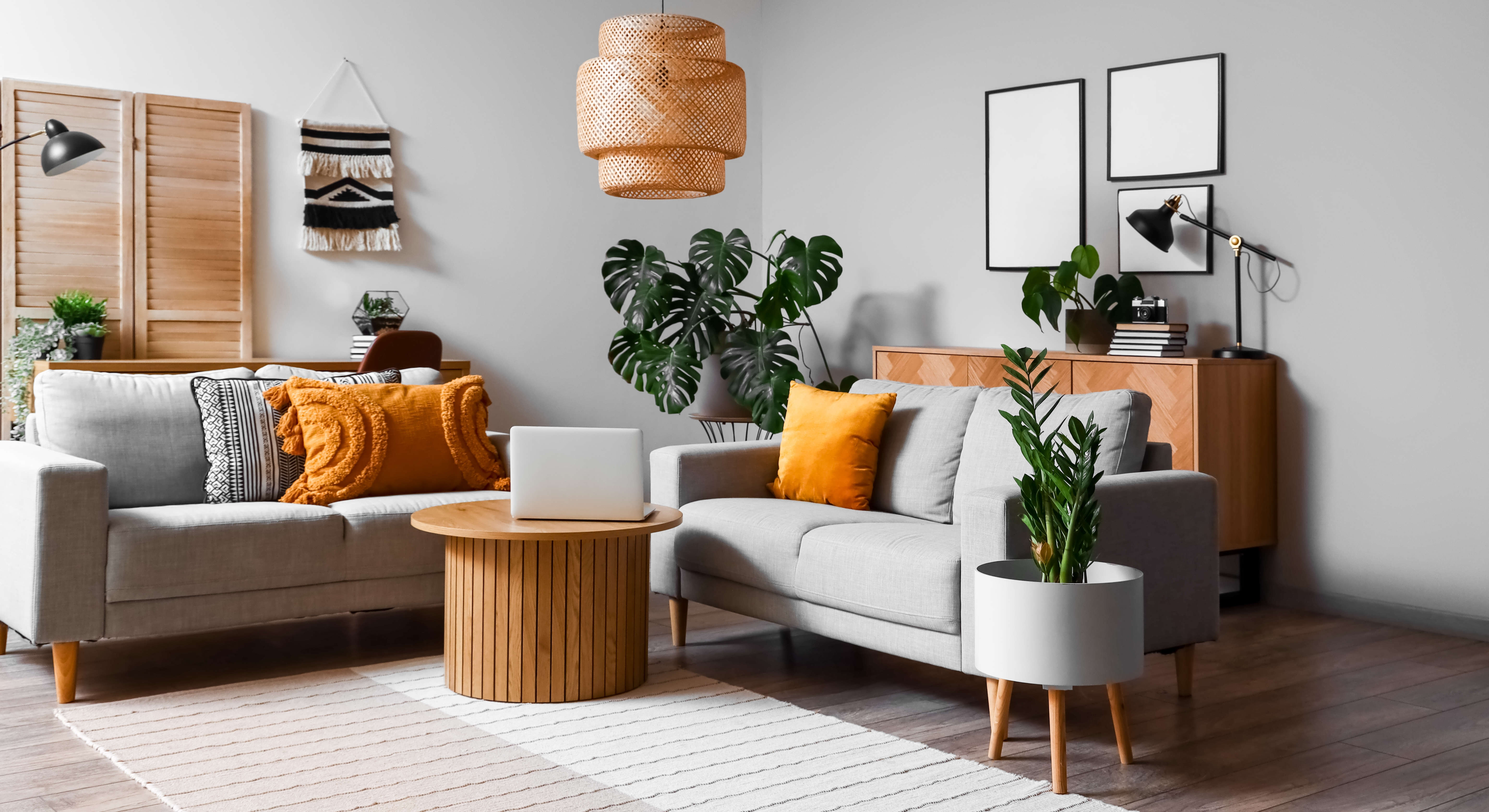
Plants can do wonders for our mood, and the positive effect is even recognised by the World Economic Forum, with 42 studies indicating that being in the presence of indoor plants can improve mental and physical health. Plants also improve indoor air quality.
For those with limited access to nature, caring for houseplants can be a positive way to get a nature fix. And you don’t have to have green fingers, as there are plenty of indoor plants that are low maintenance. While bringing nature inside, there are also plenty of indoor plants that can make your house smell nicer, too.
8. Declutter the darkness out

Too much clutter can contribute to making your interior look dark. Removing items can open up space and leave you with a room that is calmer on the eye and more organised. However, it can be hard to go through each room and decide what to get rid or or put away, especially if you’re a natural hoarder!
The Kon Mari method of decluttering is based on keeping items that ‘spark joy’ and was trialled by our Tom's Guide contributor Grace Dean when she used the Kon Mari method to declutter her home. With some guidance, Grace could easily evaluate what to keep and what to get rid of.
9. Have an earlier spring clean

While you’re decluttering, it’s a good time to have a thorough clean. Why not do that spring clean earlier in the year? We even have 5 tips on how to make spring cleaning less of a nightmare and 5 spring cleaning hacks from a professional cleaner. Giving your rooms a blitz can help brighten up your interiors and leave them smelling spring fresh. You can also freshen a room with scented candles. We like Annye’s citrus-scented candles made with soy ($15, Amazon).
I always remember my mom moving the furniture around when she had a spring clean. Although this may not be possible in smaller rooms as space is restricted, it can help open up a room and let in more light.
Do you have a sofa in front of a window that’s obscuring some light, or would prefer to move your seating closer to a window to gain the benefit of natural light? You could even add extra spot lighting in darker areas of the room.
More from Tom's Guide
- For more inspiration read 7 ways to decorate with mirrors in your home
- And these 9 decor mistakes that are making your home look smaller
- Plus, I tried the Swedish death cleaning trend for a week and it changed everything







